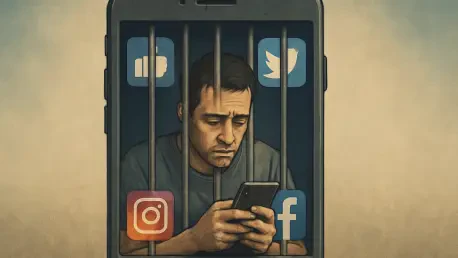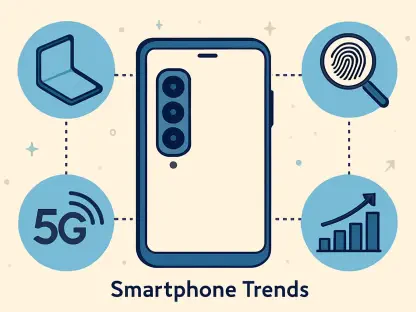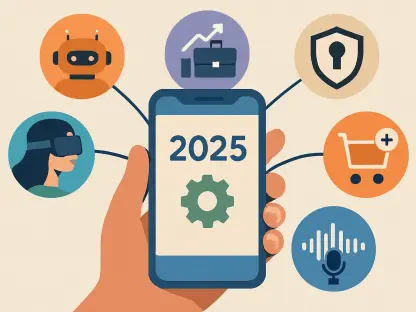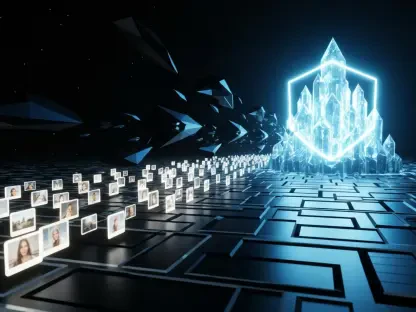In an era where digital screens dominate daily existence, social media has emerged as both a connector and a captor, ensnaring billions in a virtual reality that often overshadows the tangible world, echoing Plato’s ancient allegory of the cave where prisoners, chained from birth, mistake flickering shadows on a wall for the entirety of reality. Much like those captives, modern users find themselves mesmerized by curated feeds on platforms such as Facebook, Instagram, and TikTok, willingly immersing in a digital illusion rather than grappling with life’s raw complexities. This article seeks to unravel the transformation of these platforms from tools fostering human connection to intricate mechanisms of distraction and isolation. It probes the psychological toll, the erosion of authentic relationships, and the cultural shifts driven by this digital captivity. Moreover, with the rise of artificial intelligence (AI) adding new layers to this virtual prison, the urgency to understand and navigate these challenges intensifies. Beyond mere critique, the exploration aims to illuminate potential pathways to break free from these digital chains, questioning whether society can step out of this modern cave into a more grounded existence. The journey begins with recognizing the subtle yet profound ways these platforms have reshaped human experience, urging a deeper reflection on what it means to truly connect in an age of endless scrolls.
Unveiling the Digital Cave: Social Media as a Modern Illusion
The concept of social media as a digital cave draws a striking parallel to Plato’s allegory, where the online world becomes a constructed reality that many accept as truth. Platforms like Instagram and X present a constant stream of images, videos, and posts, meticulously tailored by algorithms to capture attention. This creates a simulacrum—a distorted reflection of life that feels vivid yet lacks the depth of real-world interaction. Users are drawn into this illusion, spending hours consuming content that often prioritizes sensationalism over substance, mirroring the shadows that deceived Plato’s prisoners with a false sense of the world.
What sets this modern captivity apart is the awareness of the illusion. Unlike the ancient captives, today’s users often recognize the disconnect between online portrayals and offline realities, yet the allure of personalized feeds keeps them tethered. The choice to remain in this digital realm, despite knowing its artificiality, reveals a complex dynamic of voluntary imprisonment. Tech companies, acting as the shadow-casters, design environments to maximize engagement, crafting experiences that are addictive by intent. This deliberate manipulation raises critical questions about autonomy and the power dynamics at play in shaping digital experiences.
Mental Shackles: The Psychological Impact of Endless Scrolling
The psychological burden of social media use has become increasingly evident as studies highlight its toll on mental well-being. Research indicates that adolescents spend nearly five hours daily on platforms, a significant increase over the past decade, with correlations to heightened rates of depression, anxiety, and negative body image. This immersion in a digital space, where comparison to idealized online personas is constant, chips away at self-esteem, creating a cycle of seeking validation through likes and comments that rarely satisfies.
Beyond individual struggles, public perception underscores a broader unease with these effects. Recent polls show that a majority of young adults view social media as detrimental to their mental health, yet the compulsion to engage persists. This paradox reflects the addictive design of these platforms, which exploit psychological triggers to maintain user presence. The mental strain extends into broader societal impacts, as the pressure to conform to digital standards distorts personal identity and fosters dissatisfaction, binding users tighter to the virtual cave with each passing day.
Fractured Bonds: The Erosion of Authentic Connection
Social media’s original promise was to bridge distances and foster meaningful connections, a vision championed by early platforms aiming to create a global community. In those initial years, sharing life updates with friends and family formed the core of digital interaction, positioning these tools as extensions of real-world relationships. The idea of a digital town square, where people could engage openly, seemed to herald a new era of closeness despite physical separation.
However, that vision has largely faded, particularly following the societal shifts during the COVID-19 pandemic, which drove unprecedented reliance on online spaces. As quarantine necessitated digital engagement, platforms pivoted from facilitating personal exchanges to prioritizing passive entertainment. Algorithms now push viral content, advertisements, and influencer posts over interactions with loved ones, transforming users into consumers rather than connectors. This shift, acknowledged even by industry leaders, marks a decline in genuine social networking, leaving many feeling more isolated amidst a crowded online landscape.
Artificial Bars: AI’s Deepening of the Digital Prison
The integration of artificial intelligence into social media platforms introduces a new dimension to digital captivity, blurring the lines between human and machine-generated content. AI-driven posts, often designed for rapid engagement, flood feeds with material that can be difficult to distinguish from authentic contributions. This influx of artificial content distorts the already tenuous grasp on reality within these digital spaces, creating an environment where truth becomes even more elusive.
Equally concerning is the rise of AI chatbots that simulate human interaction, marketed as companions to fill social voids. While some view these tools as innovative solutions for loneliness, ethical dilemmas surface regarding their potential to replace genuine relationships. Data indicates a growing reliance on AI for emotional support, yet skepticism remains about the long-term consequences of prioritizing artificial bonds over human ones. This trend risks further entrenching users in isolation, as the digital cave evolves with technology that mimics connection without its depth.
Tech visionaries often promote AI as the future of social engagement, envisioning a world where digital companions are commonplace. However, this optimism clashes with warnings from experts who fear a loss of the nuanced, messy essence of real-world interactions. The tension between innovation and dehumanization underscores a critical challenge: as AI reshapes social media, it may add stronger bars to an already confining digital prison, making escape increasingly complex.
Cultural Mirage: Navigating Hyperreality and Isolation
Social media propels users into a state of hyperreality, where the digital landscape often feels more compelling than the physical world. Through memes, short-form videos, and AI-enhanced content, platforms craft an engaging alternate reality that overshadows the mundane aspects of everyday life. This vivid online existence can eclipse tangible experiences, leading to a preference for the curated over the authentic, much like captives favoring shadows over the harsh light of truth.
This cultural shift fosters a phenomenon known as digital solipsism, where personalized algorithms trap individuals in self-reinforcing echo chambers. Exposure to diverse perspectives diminishes as feeds cater exclusively to existing beliefs, narrowing worldviews and deepening isolation. The societal impact is significant, as shared understanding erodes, replaced by fragmented realities unique to each user. This division undermines the foundation of cohesive communities, leaving society more polarized and disconnected.
The long-term cultural consequences are troubling, as continuous immersion in hyperreality risks diminishing the capacity to engage with real-world challenges. The friction of authentic life, with its inherent unpredictability, becomes foreign when replaced by the seamless flow of digital content. As a result, the ability to navigate complex social dynamics atrophies, further binding users to a virtual existence that feels safe but ultimately hollow.
From Bridges to Barriers: The Transformation of Platforms
Tracing the evolution of social media reveals a profound shift from its foundational purpose of connecting people to its current role as a source of distraction. Early platforms were built on the premise of mirroring real-life networks, enabling communication across vast distances with a focus on personal interaction. This mission positioned digital spaces as vital tools for maintaining relationships in an increasingly globalized world.
That original intent has been overshadowed by a marked pivot, accelerated by societal changes during global lockdowns. As physical isolation necessitated online presence, platforms adapted by prioritizing content that entertains over content that connects. Algorithms now elevate material designed to hold attention, often at the expense of meaningful dialogue. This transformation reflects a broader disillusionment with the internet’s initial promise of community, as commercial interests redefine users as targets for engagement rather than participants in a shared space.
The implications of this shift extend beyond individual experiences to a collective sense of loss. What was once heralded as a democratizing force has become a mechanism for passive consumption, driven by profit motives rather than social good. This change challenges the very notion of what social media was meant to be, turning bridges of connection into barriers that keep users confined within a cycle of endless, superficial content.
Invisible Strings: The Power of Algorithmic Control
Behind the facade of social media lies the unseen influence of algorithms, which dictate the content users encounter daily. These systems, designed by tech companies, prioritize material based on engagement metrics rather than intrinsic value, often amplifying divisive or sensational content to maximize time spent on platforms. This curation shapes perceptions and behaviors in subtle yet profound ways, acting as the puppet strings of the digital cave.
Such control is far from neutral, serving the financial interests of corporations over the well-being of users. By crafting environments that exploit psychological vulnerabilities, these algorithms ensure prolonged engagement, often at the cost of mental health and social harmony. The result is a loss of agency, as decisions about what to see and believe are guided by invisible forces aligned with profit rather than enlightenment.
This algorithmic manipulation also fuels societal polarization by creating filter bubbles that reinforce existing viewpoints. Exposure to opposing ideas diminishes, widening political and cultural divides and stifling opportunities for constructive dialogue. As these systems entrench users in tailored realities, the digital prison tightens, limiting the potential for a shared understanding that could challenge the cave’s illusions.
Stepping into the Light: Pathways to Digital Liberation
Amidst the confines of the digital cave, the first glimmers of freedom emerge through awareness of its constructed nature. Recognizing that social media presents a distorted version of reality serves as a crucial starting point for reclaiming autonomy. Questioning the authenticity of online narratives and seeking truths beyond the screen can begin to loosen the grip of virtual captivity, offering a glimpse of life outside the shadows.
Awareness alone, however, falls short without actionable steps to redefine engagement with technology. Setting intentional boundaries on usage, prioritizing in-person interactions, and curating feeds to include diverse perspectives can counteract the isolating effects of algorithms. These small but deliberate choices empower users to resist the pull of instant gratification, fostering a gradual shift toward a more balanced relationship with digital spaces.
Yet, the journey to liberation remains fraught with challenges, as the seductive design of platforms continually tempts a return to familiar patterns. Escaping this modern prison demands sustained effort and vigilance, a commitment to valuing real-world connections over digital distractions. By consistently choosing authenticity over illusion, society can inch closer to the light, rediscovering the richness of life beyond the cave’s confining walls.









